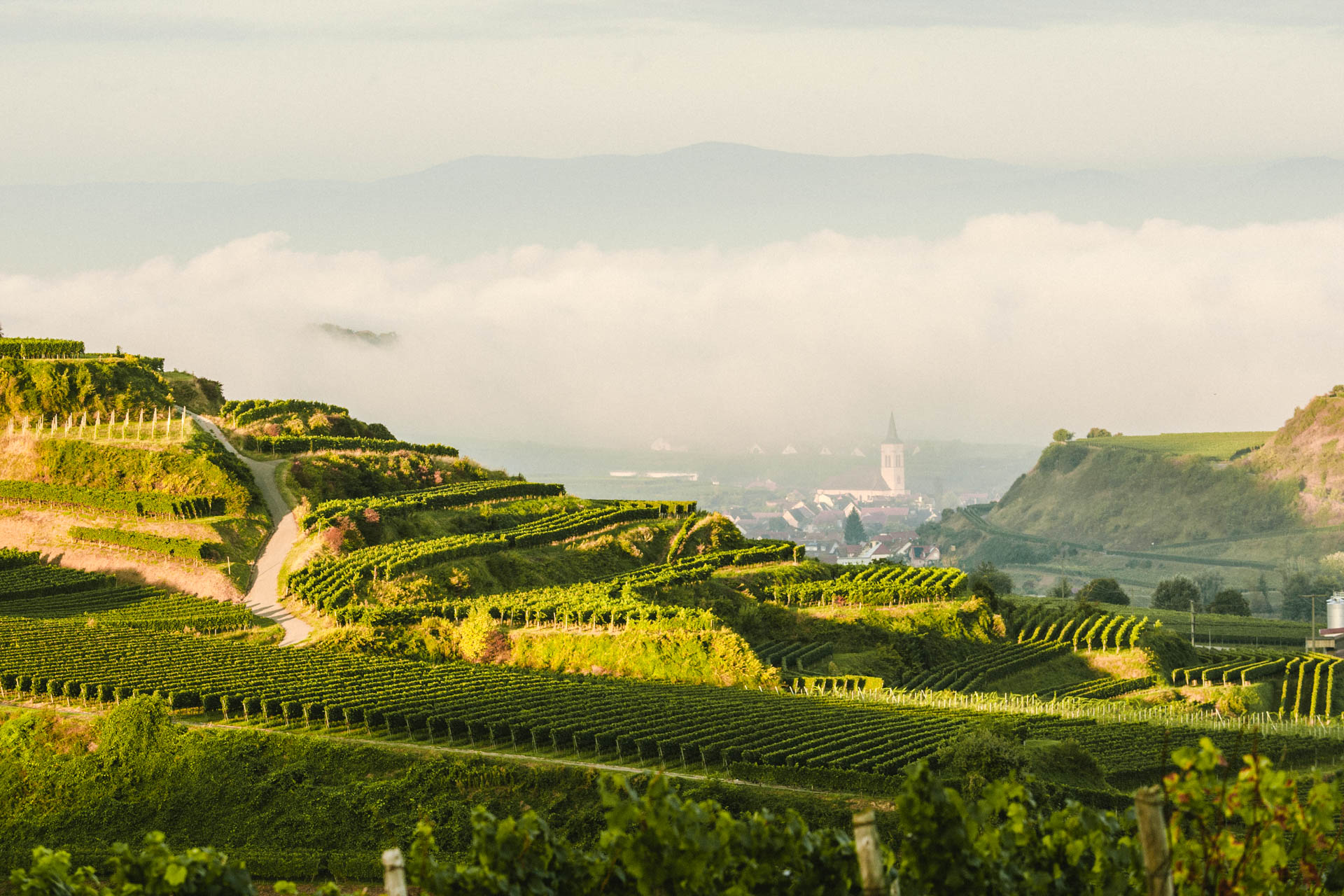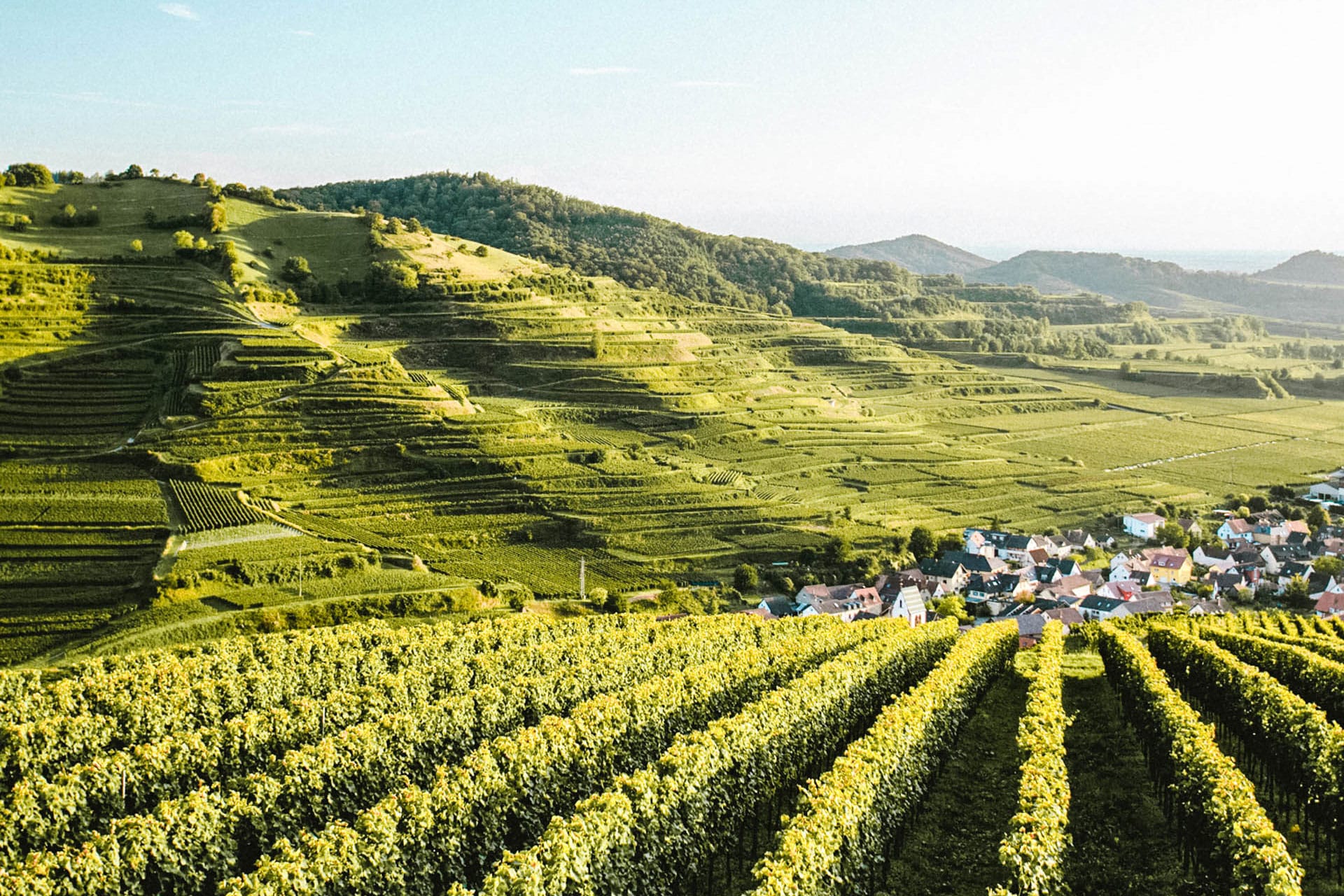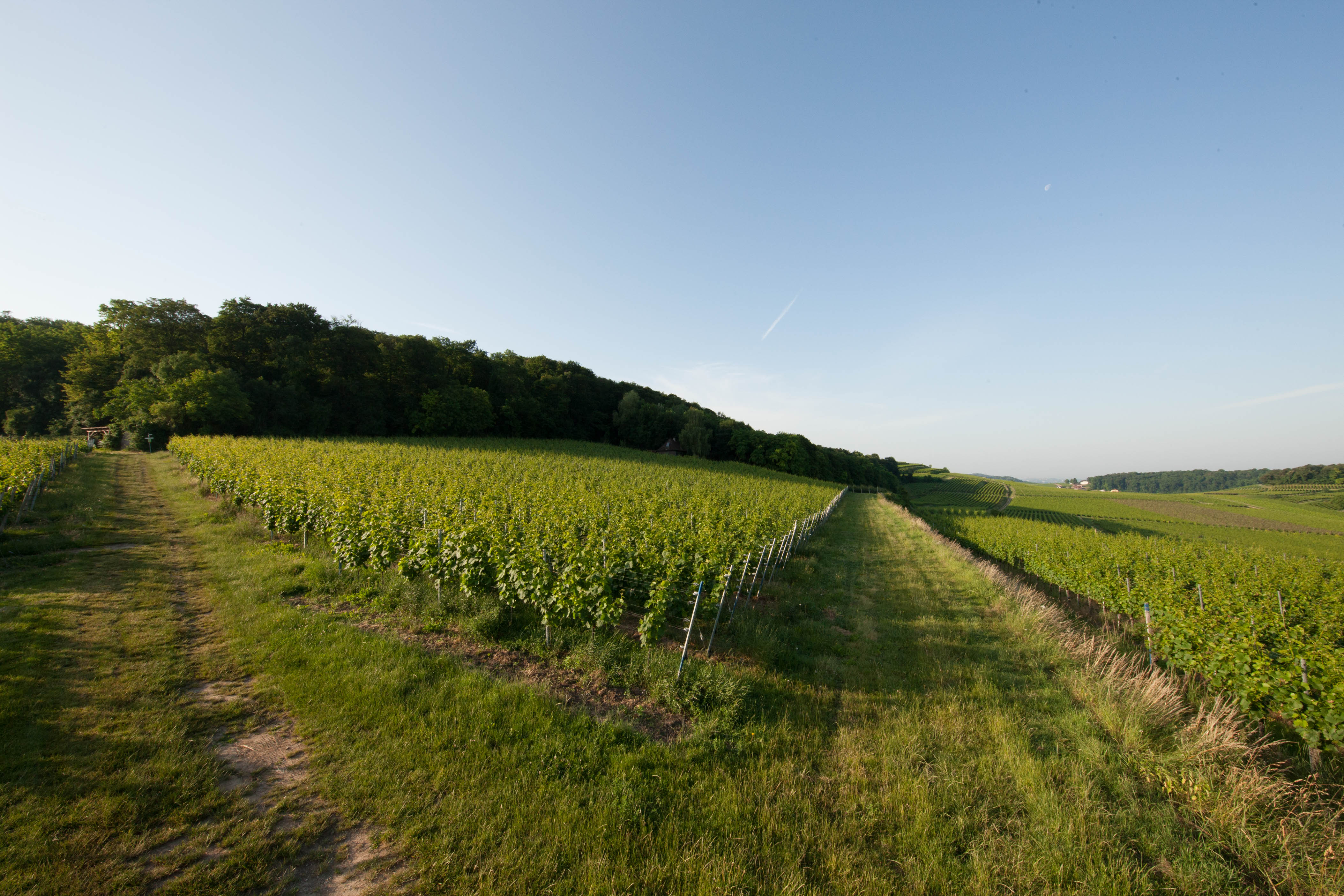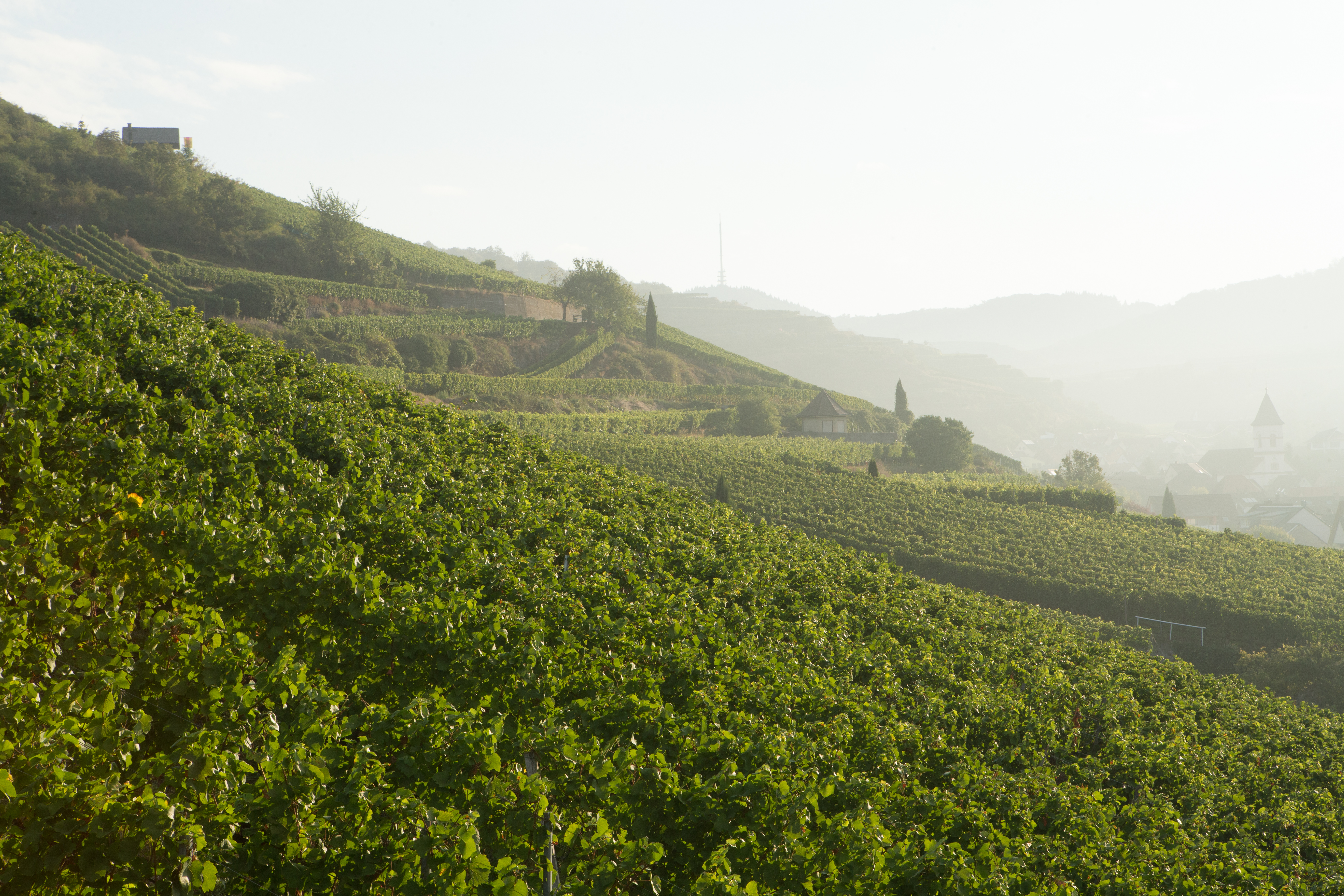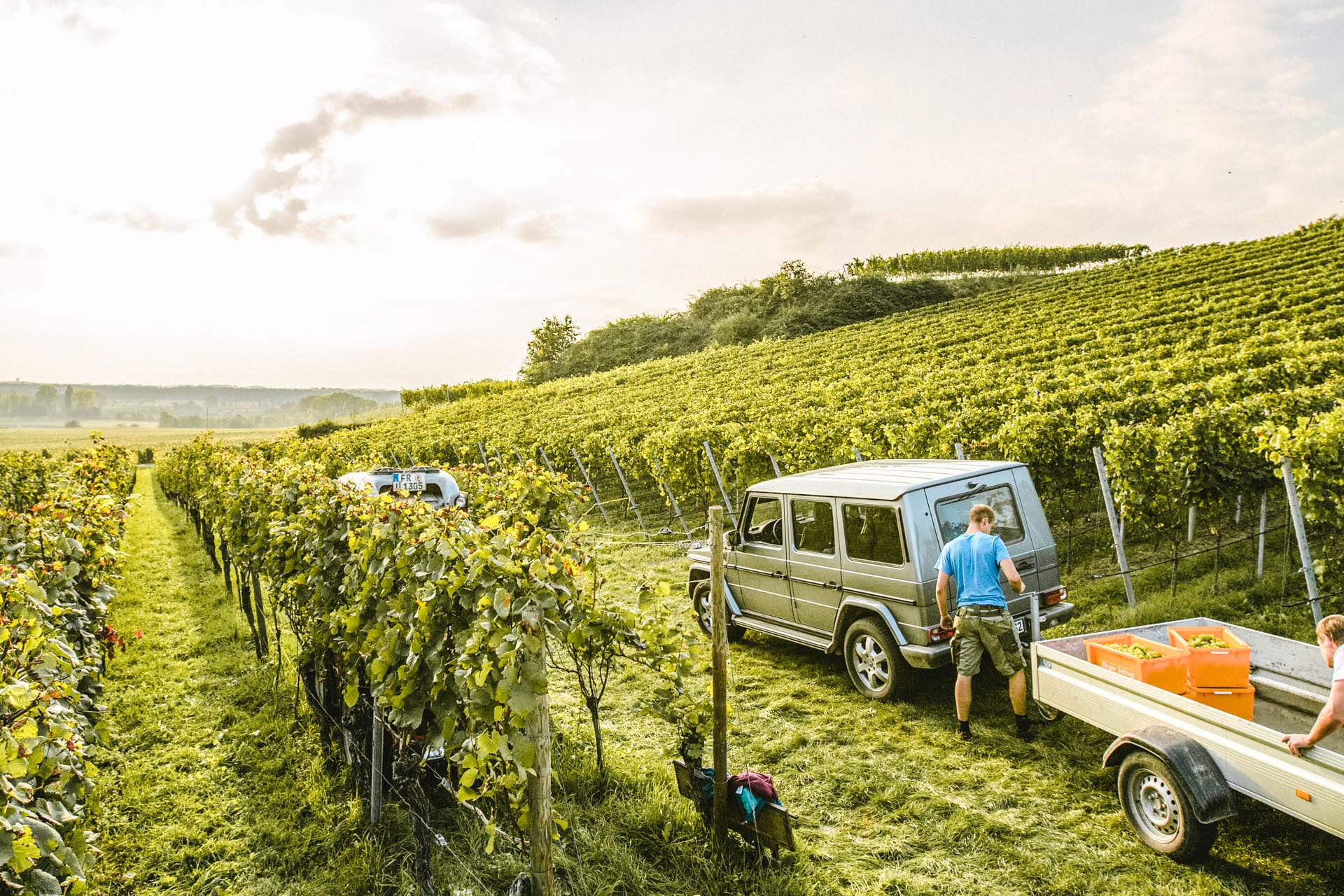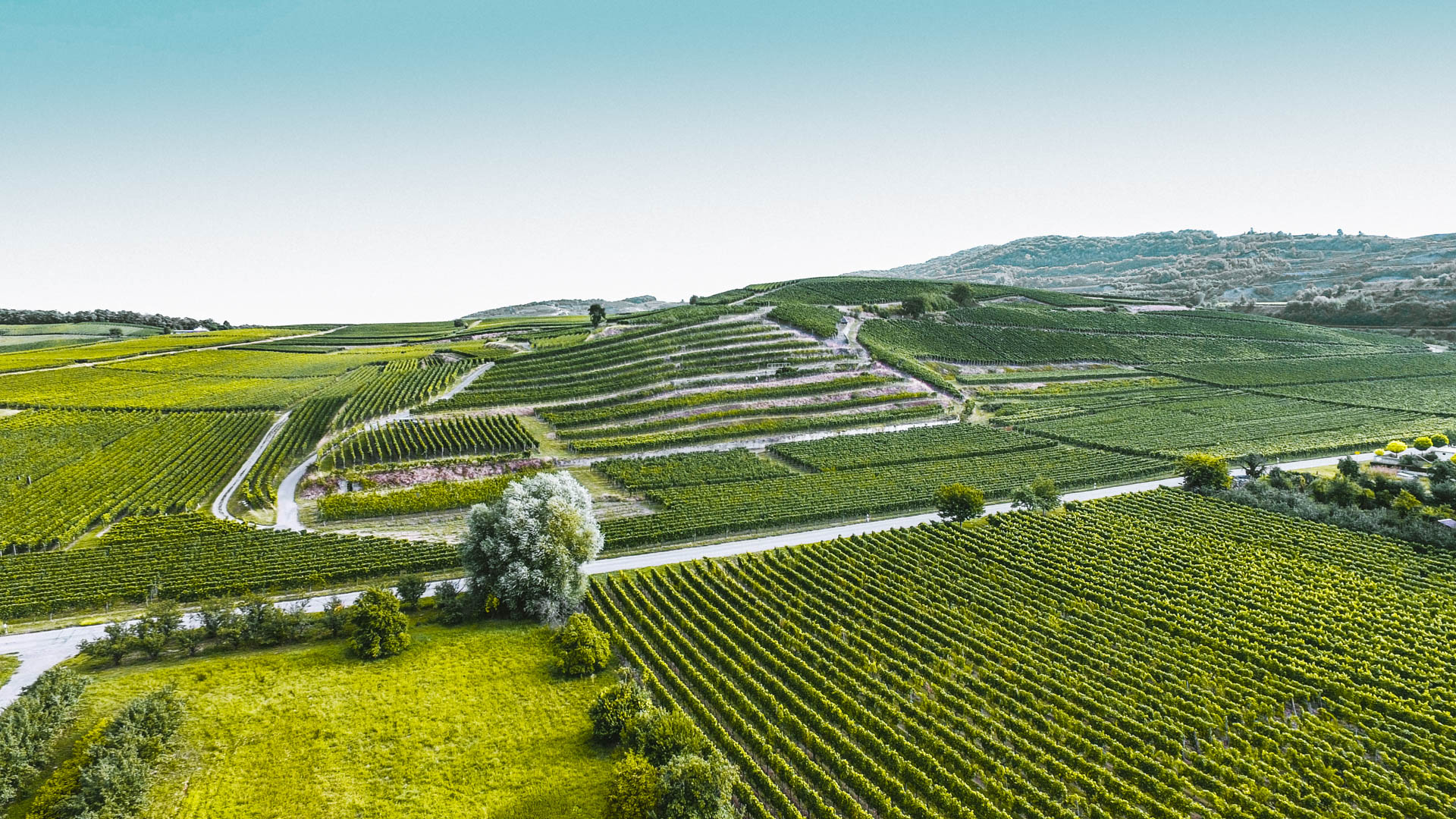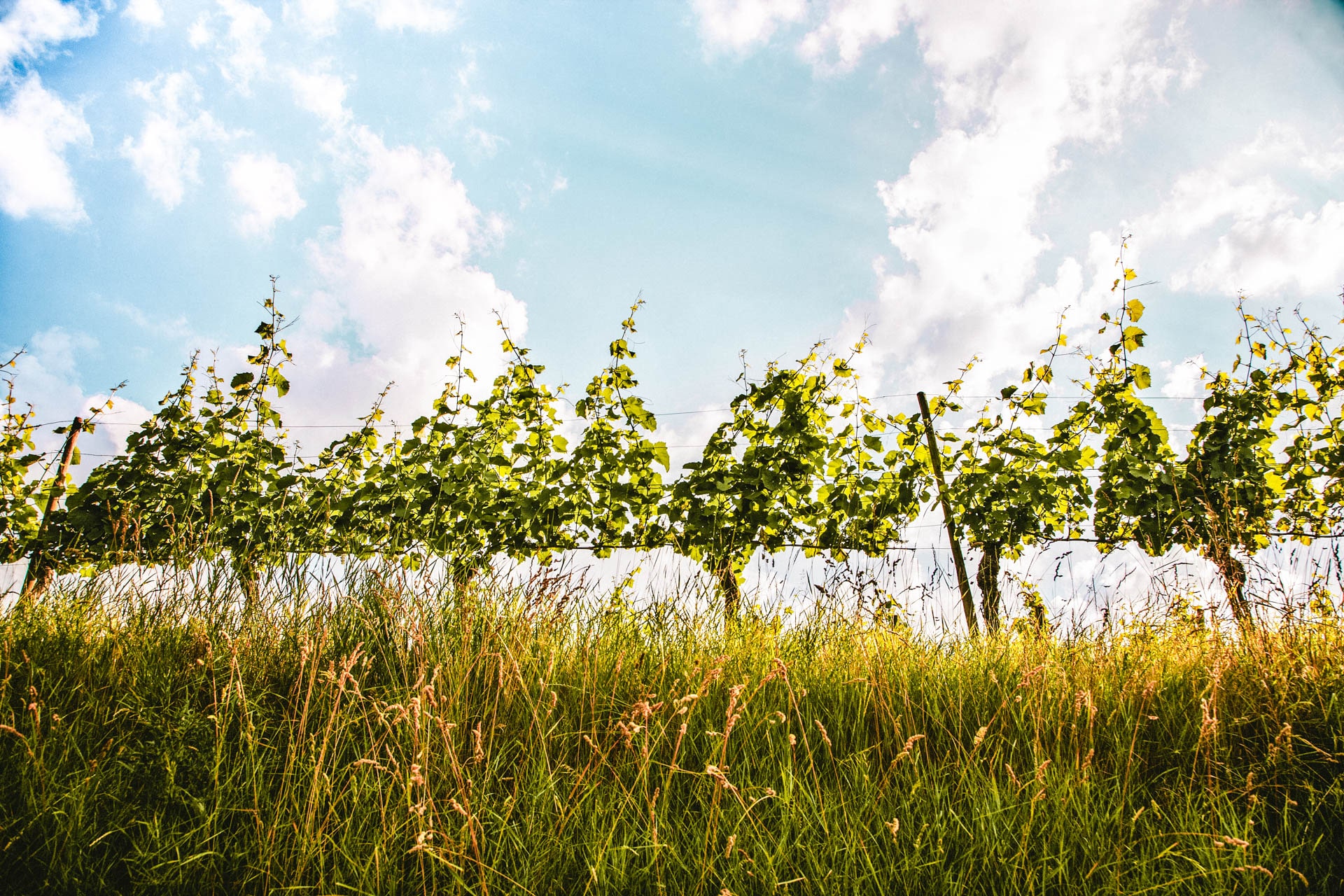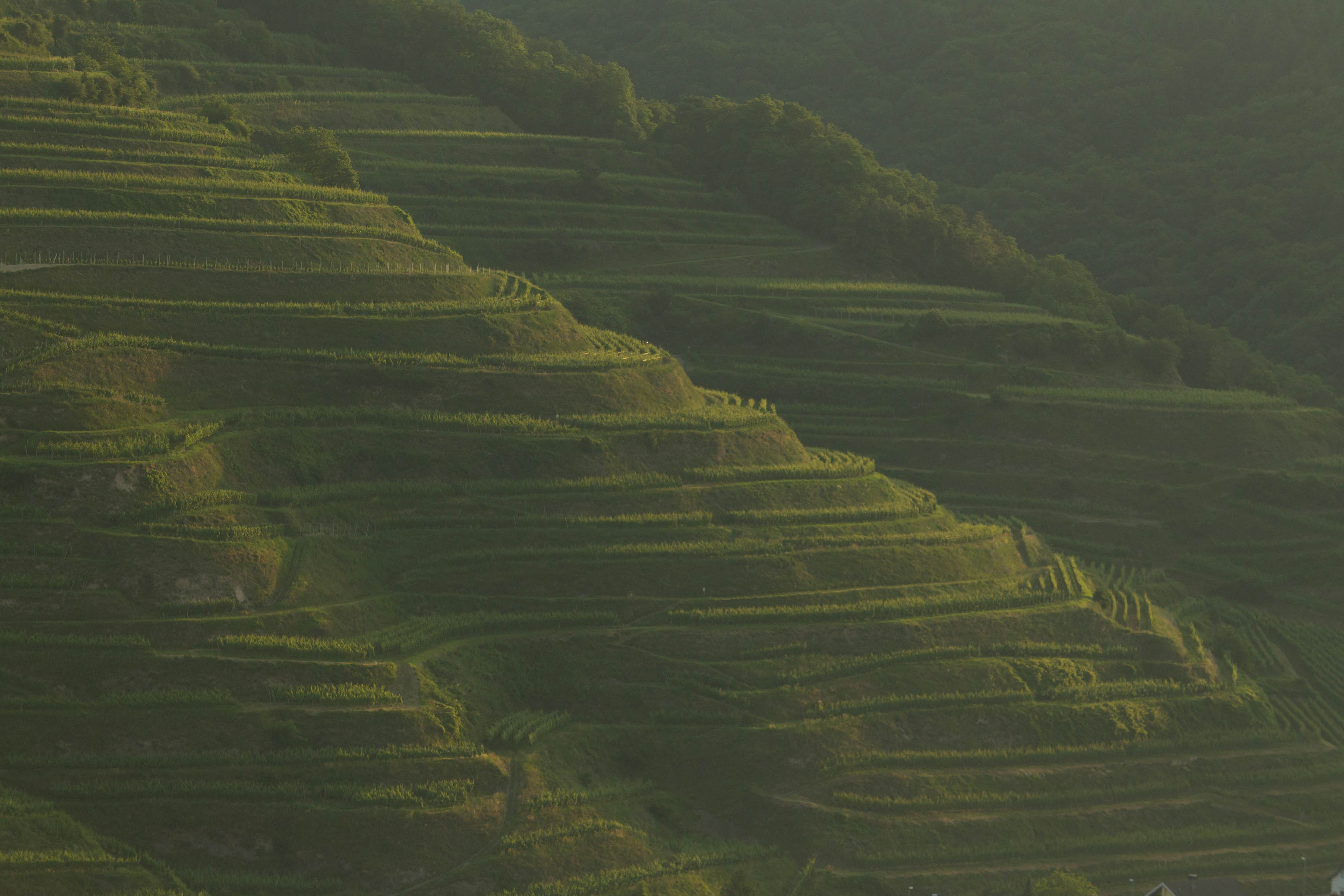Vineyards
Weingut Franz Keller has been a member of “VDP. Die Prädikatsweingüter”, the most esteemed German association for winemakers, since 2014.
Kaiserstuhl, the warmest and sunniest German wine region, is characterized by volcanic soils covered with fertile loess that provide excellent wine growing conditions. Volcanic soils types vary greatly from vineyard to vineyard. This soil diversity contributes vastly to the exciting taste variety of our wines.
Bassgeige
| Klassifikation: | VDP.Erste Lage |
| Gemeinde: | Oberbergen |
| Böden: | loess and volcanic soil |
| Sorten: | Chardonnay, Grauburgunder (Pinot Gris), Weissburgunder (Pinot Blanc) and Spätburgunder (Pinot Noir) |
Oberbergener Bassgeige, a name derived from the characteristic shape of the vineyards surrounding the village, is known well beyond Baden. The terroir consists of mainly loess on top of volcanic rock, contributing to the distinctive character of the wines. Here, we cultivate cooler vineyards on higher elevations that bring forth elegant wines with delicate aroma as well as south-facing slopes close to the village, leading to more powerful wines. We aim to emphasize varietal characteristics through a discreet use of oak.
Pulverbuck
| Klassifikation: | VDP.Erste Lage |
| Gemeinde: | Oberbergen |
| Böden: | loess and calcareous, weathered volcanic soil |
| Sorten: | Weissburgunder (Pinot Blanc) |
Wines from this single vineyard situated on 400 meters (approx. 1300 feet), at the edge of the forest, are delicate and fruit forward. Its unique soil is composed of powdery loess on weathered volcanic rock.
A rather large chalk deposit found in this vineyard’s soil, the maturation in traditional oak barrels along with spontaneous fermentation lead to a tremendously refreshing, mineral driven and slightly tangy Pinot Blanc. This wine has been one of our true classics for over 40 years.
Enselberg
| Klassifikation: | VDP.Grosse Lage |
| Gemeinde: | Jechtingen |
| Böden: | bright and dark volcanic soil with loess |
| Sorten: | Spätburgunder (Pinot Noir) |
This west-facing, windy vineyard with a spectacular view towards the Rhine plains is characterized by its partially bright, partially dark and stony volcanic soil on the bottom, topped with a fine layer of loess.
In 1999 and 2003, the 100% Burgundian Pinot Noir clones were planted in these two parcels, bringing forth a delicate and feminine type of Pinot Noir. Finesse and subtle acidity are more prevailing in this wine than power and concentration.
Schlossberg
| Klassifikation: | VDP.Grosse Lage |
| Gemeinde: | Achkarren |
| Böden: | calcareous volcanic soil (Tephrit) |
| Sorten: | Grauburgunder (Pinot Gris) and Spätburgunder (Pinot Noir) |
The center piece of this historically important vineyard – warm, sheltered, steep slopes – stores heat and creates a unique microclimate. Purchasing this parcel was not an easy endeavor! On a walk through the vineyards Fritz Keller noticed the beginning of a vineyard clearance. Since the preservation of old vines and their genetics is important to him, he found out who owned the vineyard to make an offer. Even though the owners had no successor who wanted to work these steep slopes, selling the vineyard to someone from Oberbergen was not an option for the Achkarrer owners. Their attitude was: „Achkarrer do not sell to Oberbergener!“
But Fritz Keller could proof that his mother was from Achkarren, so the owners eventually said yes. Thanks to this effort Schlossberg GROSSES GEWÄCHS still is a unique parcel with ancient vines.
Since 2009 we also own and manually cultivate another parcel here. This vineyard is surrounded by dry stonewall and characterized by its black volcanic soil. The stonewall is up to 4 meters high and about 150 meters long. Secured by our team, it will last for generations. Lizards, snakes, and fire salamander find shelter in the stonewall, especially during the winter. The Pinot Gris and Pinot Noir growing here was replanted from old vines (Sélection Massale).
Kirchberg
| Klassifikation: | VDP.Grosse Lage |
| Gemeinde: | Oberrotweil |
| Böden: | calcareous volcanic gravel (Phonolith) |
| Sorten: | Chardonnay and Spätburgunder (Pinot Noir) |
In this south-/southwest facing vineyard you can feel the influence of the Belfort Gap especially well. The soil of the west facing, more exposed, parts of this parcel have more gravel. Generally it is always a bit cooler here, compared to Schlossberg and Eichberg.
This Pinot Noir vineyard was planted in 1975 by Fritz Keller. Due to the bright calcareous volcanic gravel the wine turns out delicate and rather low-key. The Chardonnay parcel was planted in 1990 with exceptional cuttings from Burgundy.
Eichberg
| Klassifikation: | VDP.Grosse Lage |
| Gemeinde: | Oberrotweil |
| Böden: | dark volcanic soil (Tephrit) |
| Sorten: | Spätburgunder (Pinot Noir) |
Our parcel that is located at the bottom half of this vineyard and was planted by Fritz Keller in 1994 with Pinot Noir clones from Burgundy exclusively. This south, partially southeast and southwest facing vineyard is one of our warmest sites.
The dark volcanic soil leads to a distinctive, rather masculine Pinot Noir that becomes powerful and animalistic, showing notes of tar, with increasing maturity. We always aim for a typical Kaiserstuhl Pinot Noir, here.
Im Leh
| Klassifikation: | VDP.Grosse Lage |
| Gemeinde: | Oberbergen |
| Böden: | calcareous loess |
| Sorten: | Weissburgunder (Pinot Blanc) |
„Im Leh“ is one of the best parcels within the core of Oberbergener Bassgeige. During the Hallstatt period this name was used for a graveyard site. Ancient settlements can be traced back to this area, where the Romans cultivated wine.
This VDP.GROSSE GEWÄCHS is our oldest Pinot Blanc vineyard, planted in 1979. Friedrich’s grandmother already worked in this vineyard.
The roots of these south-facing vines go deep into the calcareous loess. We harvest these grapes early and mature the wine, partially, in new oak barrels (350 l). This Pinot Blanc reminds us of yellow stone fruit, has decent minerality, and a soft mouthfeel.
Kähner
| Klassifikation: | VDP.Grosse Lage |
| Gemeinde: | Oberbergen |
| Böden: | loess and volcanic soil |
| Sorten: | Grauburgunder (Pinot Gris) |
“Kähner” is one of the few vineyards in Oberbergen that was omitted from the land consolidation project of the 1960’s and 1970’s. Due to its small terraces this Pinot Gris parcel can only be cultivated manually. The name is derived from the local dialect and means rain pipe. The rocky, meager soil forces the Pinot Gris to take on a distinctive yet delicate pattern, often showing notes of oriental spices.
Most of the time, the wine ages in large, traditional oak barrels but, depending on the vintage, we partially use 350 liter barrels as well to influence the structure of the wine.
